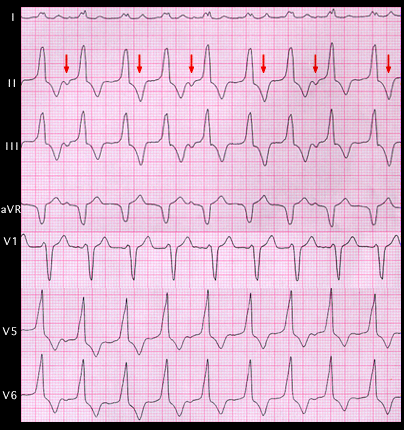
[THE 2nd 4th AND 6th ARROWS SHOULD BE BROKEN (RATHER THAN SOLID)]
The ECG is characteristic of the ventricular tachycardias that originate in the right ventricular outflow tract and are labeled as such, i.e. right ventricular outflow tract (RVOT) tachycardia. These arrhythmias are catecholamine sensitive, are often brought on by exercise and frequently respond to treatment with beat-adrenergic blocking agents. The retrograde P waves are marked. The solid arrows point at obvious P waves. The broken arrows point at T waves that are a bit different than their neighbors, suggesting that they contain an additional P wave having a VA interval that is less than that associated with the following, obvious P wave. This complicated relationship of the superiorly directed P waves to the QRS complexes suggests 3:2 retrograde VA conduction.
